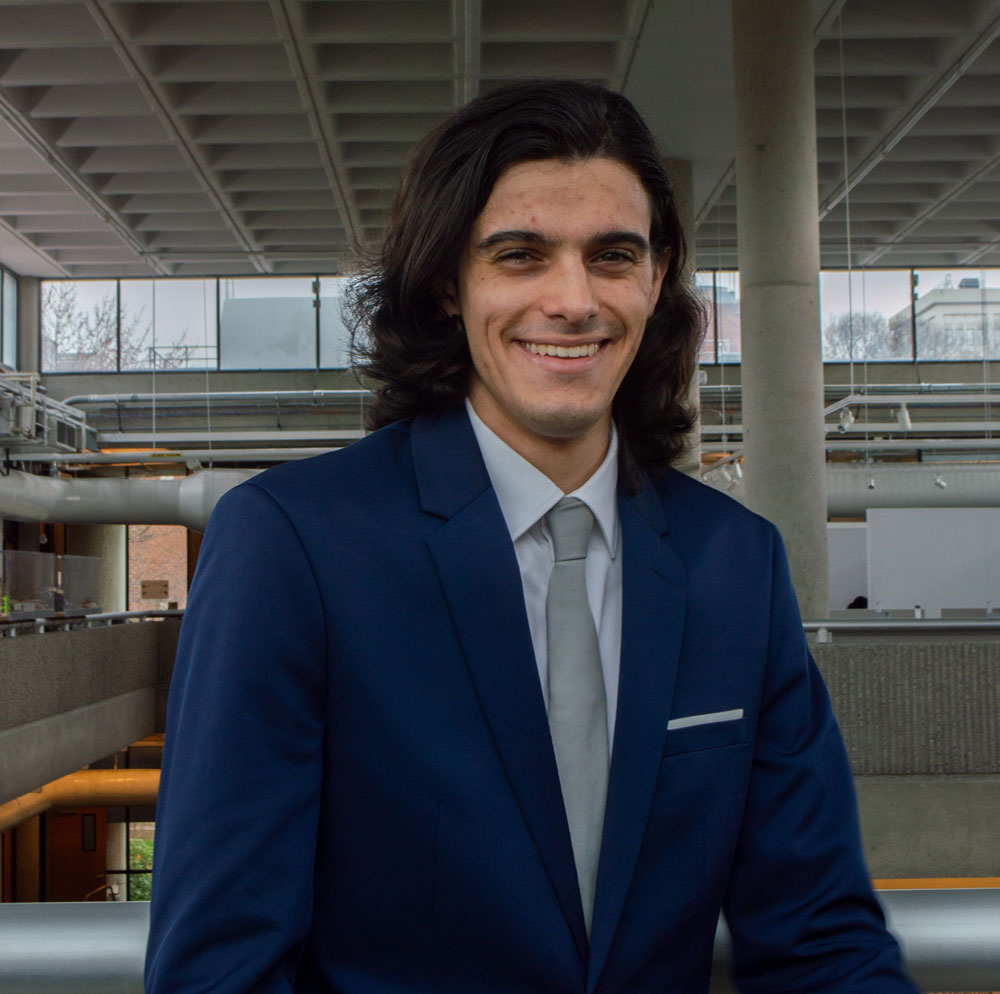By Ines Aviles-Spadoni, M.S., STRIDE Research Coordinator

Congratulations to Matteo Saracco, a master’s student at the Georgia Institute of Technology (Georgia Tech), for being selected as the STRIDE Center 2022 Student of the Year.
For more than three decades, the U.S. Department of Transportation has honored students affiliated with University Transportation Centers (UTCs) who have demonstrated outstanding academic performance, leadership and professionalism, and technical and research capabilities.
“I feel extremely honored and humbled. I am very grateful for the nomination and the great consideration the reviewers have given me,” Saracco said. “Most of all, I am happy for the work and effort that I and the rest of the research team put into this project to be recognized at such a high level.”
Saracco and students from other UTCs will be honored during an awards ceremony held in conjunction with the Council of University Transportation Centers (UTC) awards banquet at the Transportation Research Board (TRB) Annual Meeting on January 7, 2023, in Washington, D.C.
So how did Saracco become interested in transportation? It emerges from his observations of the built environment during his travels within the United States, Europe, and Africa. The various cityscapes and transportation network designs captured his attention and led him to pursue a dual master’s degree in civil engineering and city and regional planning at Georgia Tech with a focus on transportation.
As a dual degree master’s student, he is learning about transportation network simulation, Geographic Information Systems (GIS), and more. His hope is to acquire a solid foundation that will allow him to work seamlessly with both transportation engineers and planners.
“As I work to become a well-rounded transportation analyst, capable of working on projects with planners and engineers alike, I am taking courses that will help me acquire knowledge that bridges the spheres of these two professions,” he said. “From multimodal transportation and tactical urbanism, to simulation, traffic engineering, and GIS, I am working to broaden my skillset on many levels by taking a wide variety of classes.”
Saracco is also working on a STRIDE year 2 project that is currently in the process of wrapping up. The project is titled Enabling the Shared Mobility Revolution. It is led by Dr. Kari Watkins formerly at Georgia Tech. Saracco’s role in the STRIDE year 2 project was to create models and simulations to help the research team understand the effects of changing curb demand and make recommendations for curb management strategies.
To create these simulations, Saracco had to collect real-world data and used R Studio to analyze the raw data obtained from video feeds of various road sections near Georgia Tech.
“By aggregating and processing the data, I obtained useful information to create simulated curb environments that were realistic and accurate,” he said. “After having built all the models and run the simulations, I analyzed the outputs to understand how different curb layouts would perform under various traffic flow profiles.”
The project in general led to the understanding that flexible curb designs with dedicated and adaptive pick-up/drop-off spaces have the potential to increase curb productivity and improve the performance of the curb environment, especially when confronted with an increase in short-term parking that is typical of ride sharing and ride hailing services.
Sarcco says the findings are a starting point for additional research in the field of curb management strategies as it relates to shared mobility.
“The research shows that the likely shift in curb space use driven by ride-hailing and shared mobility services needs to be met by an equal shift in curb design,” he said. “Our findings can help point engineers and planners in the direction of flexible curbs and dedicated pick-up/drop-off zones, though more in-depth research is needed to fully grasp the implications of such a change.”
What is next for Saracco after graduation? Saracco plans to work in the private sector as a consultant, working with an interdisciplinary team on transportation-related projects in the United States.
“I hope my skillset and background can be put to use to create better, more multimodal transportation networks,” he said. “My goal is to help foster a shift away from automobile-dependent transportation systems with an eye on sustainability and equity.”